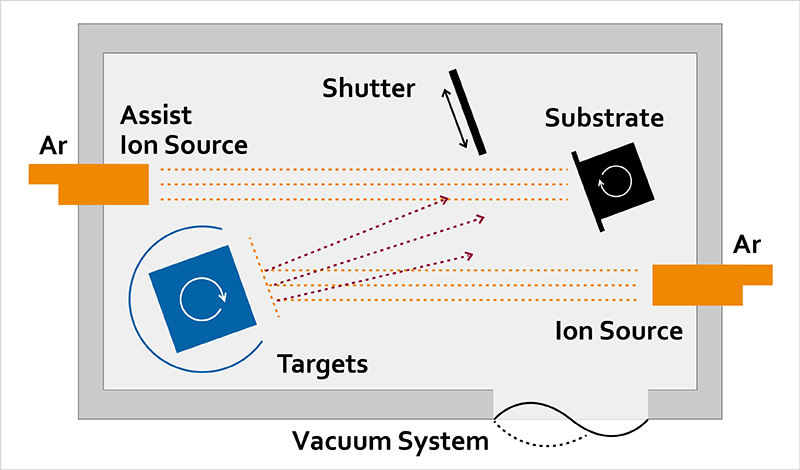
Posted on
Ion beam deposition (IBD) is a thin film deposition method that produces the highest quality films with excellent precision. Also referred to as ion beam sputtering (IBS), it’s a process that’s used when tight control over film thickness and stoichiometry is needed.
How it Works
During the ion beam deposition process, an ion source is used to sputter a target, and the sputtered material is deposited onto a substrate. The ions possess equal energy, making the process monoenergetic and highly collimated.
In a typical configuration, an IBD system features the ion source, a target and a substrate. The ion beam focuses on a target material, and the sputtered material then deposits onto the substrate. The configuration may also include a second gridded ion source to be directed at the substrate, to provide for ion assisted deposition.
When to Use Ion Beam Deposition
IBD is the slowest and most expensive deposition method, but it also produces the highest quality thin films in both precision and performance. Here are the benefits that would make IBD the right choice for you:
- Highest precision coatings: Other physical vapor deposition (PVD) methods don’t offer the same level of precision as ion beam deposition. The process gives you control over several parameters, such as target sputtering rate and ion current density, that evaporative techniques and magnetron sputtering cannot provide. Being able to control these variables independently leads to the most precise coatings, making it ideal for precision optics or semiconductor production where high-quality films are a necessity.
- Extremely tight control over film thickness: A high level of precision is particularly desirable for controlling the thin film thickness and uniformity. With IBD and its excellent precision and repeatability, you can be assured that your thin film coating will meet those specs.
- Environmental stability/durability: Because of the collimated monoenergetic deposition inherent to IBD, the coatings produced are usually extremely uniform and very dense, with excellent adhesion to the substrate. This makes the coatings highly stable and durable, so they are ideal for applications where durability and reliability is a must.
- Low absorption and scattering: If you require a thin film deposition method with the highest possible transmission for thicker films, then IBD is your best option, because it produces low absorption and scatter compared to other PVD methods.
- Highly automated process: The IBD process can be automated, so operator supervision is not needed to deliver high quality, high precision films.
There are some limitations to IBD that will also need to be considered. Due to its small deposition area and effective deposition rate, it comes at a higher cost compared to other PVD methods. If cost of ownership is a concern, then ion assisted deposition or magnetron sputtering may be a better fit. But if tighter control and stoichiometry are the greatest concerns and performance is imperative for ROI, then IBD should be your method of choice.